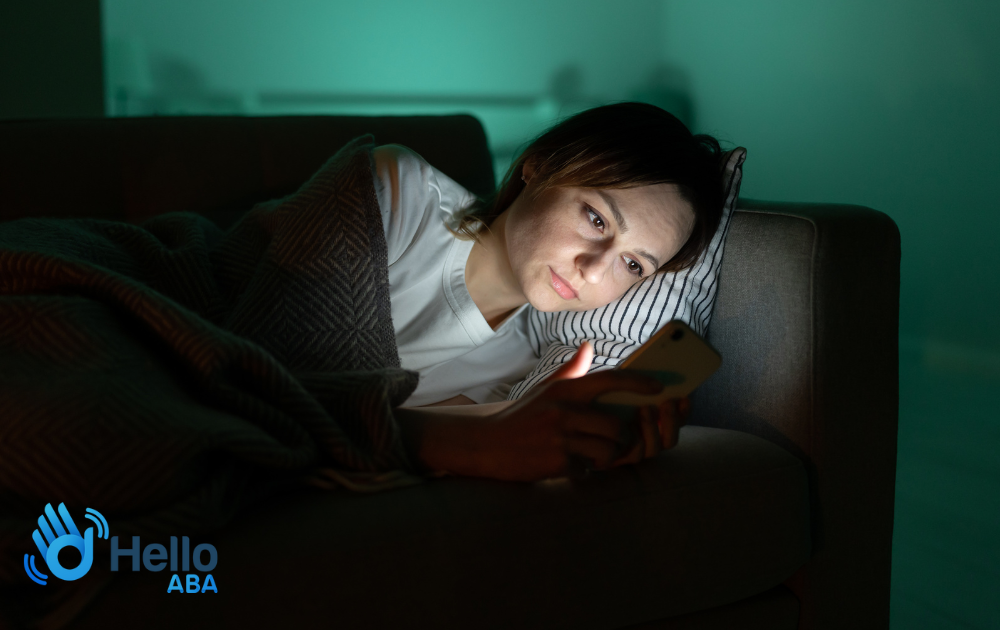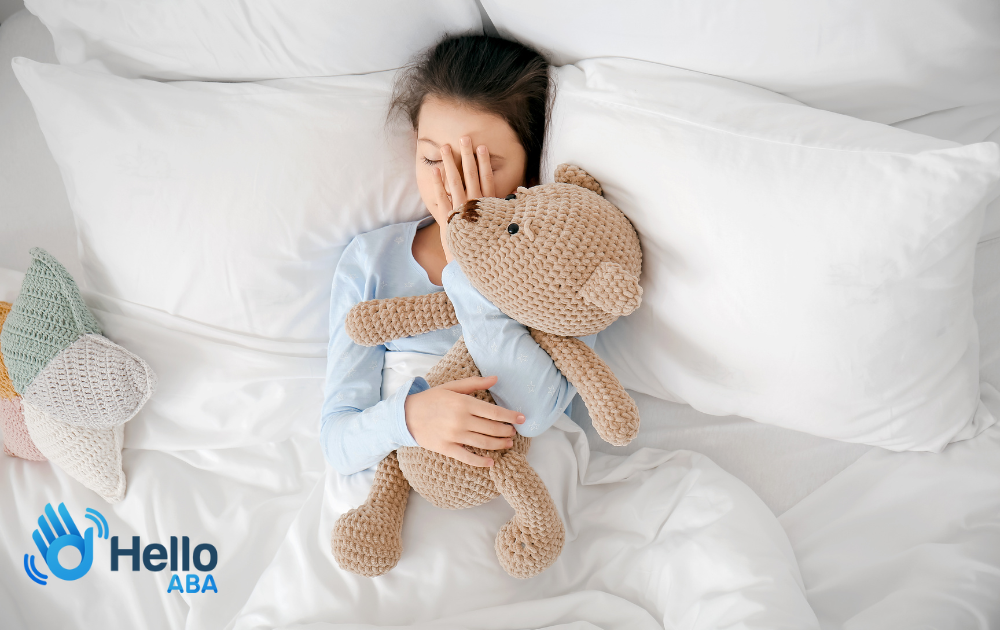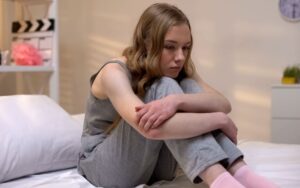For individuals with autism, sleep patterns can often be disrupted, leading to various sleep challenges. Understanding these challenges and the prevalence of sleep disorders in autism is crucial for parents, caregivers, and individuals with autism themselves.
Sleep Challenges in Autistic Children
Autistic children can experience particular sleep and settling problems, including difficulties getting to sleep and staying asleep. These sleep problems can be influenced by various factors such as bedtime habits, daytime habits, anxiety, bedwetting, biological causes, illnesses, night terrors, restless sleep, snoring, and social communication difficulties.
To address these challenges, it is important to establish consistent bedtime routines and create a sleep-friendly environment. Creating a calm and soothing atmosphere, minimizing sensory stimulation, and implementing relaxation techniques can help promote better sleep in autistic children.

Prevalence of Sleep Disorders in Autism
Sleep disorders are significantly more common in individuals with autism compared to typically developing individuals or those with other developmental conditions. Between 50% and 80% of children with autism experience sleep problems, along with about half of adolescents with autism. This rate is significantly higher than that of typically developing youth.
Furthermore, sleep disturbances continue to affect individuals with autism into adulthood, with up to 80% of adults with autism experiencing sleep problems. These sleep disorders can significantly impact daily functioning, behavior, and overall quality of life.
A 2019 study indicated that disrupted sleep is twice as common among autistic preschoolers compared to typical children or those with other developmental conditions, affecting nearly 80% of the autistic preschoolers studied.
Understanding the prevalence of sleep disorders in autism highlights the importance of addressing and managing sleep challenges in individuals with autism. By identifying and addressing the underlying causes of sleep disturbances, we can improve sleep quality and overall well-being for individuals with autism.
Factors Influencing Sleep in Autism
Sleep problems in autism can stem from several factors that impact the ability to get adequate and restful sleep. Understanding these factors is crucial for developing effective strategies to manage sleep disturbances. Here are three key factors influencing sleep in autism: circadian rhythm irregularities, sensory sensitivities, and iron deficiency.
Circadian Rhythm Irregularities
Researchers believe that individuals with autism may experience irregularities or disruptions in their circadian rhythms, which govern bodily functions, including the sleep-wake cycle. These irregularities may be attributed to abnormalities in genes controlling the biological clock and melatonin production.
Circadian rhythm irregularities can manifest as difficulties falling asleep at night, frequent nighttime awakenings, or early morning awakenings. These disruptions can significantly impact the overall quality and duration of sleep. Establishing a consistent sleep schedule, maintaining a sleep-friendly environment, and implementing bedtime routines can help regulate the circadian rhythms and promote better sleep in individuals with autism.

Sensory Sensitivities and Sleep
Sensory sensitivities are common among individuals with autism. Light and sound, in particular, can have a significant impact on sleep. Those who are highly sensitive to these sensory cues may limit their exposure, inhibiting their ability to establish strong circadian rhythms and potentially leading to sleep disturbances.
Creating a sleep environment that minimizes sensory stimuli can be beneficial. This may involve using blackout curtains or eye masks to block out light, using earplugs or white noise machines to reduce noise disruptions, and ensuring the bedroom is a calm and soothing space. By addressing sensory sensitivities, individuals with autism can create an environment conducive to better sleep.
Iron Deficiency and Restless Sleep
Iron deficiency is another factor that can contribute to sleep problems in individuals with autism. Restless sleep, characterized by frequent movements and periodic limb movements during sleep (PLMS), can be associated with iron deficiency. PLMS can disrupt sleep and lead to daytime sleepiness and fatigue.
Ensuring a balanced and nutritious diet that includes iron-rich foods can help address iron deficiency and potentially improve sleep quality. However, it’s important to consult with a healthcare professional to determine if iron supplementation is necessary and to determine the appropriate dosage.

Diagnosis of Sleep Disturbances
For individuals with autism, diagnosing and addressing sleep disturbances is essential for improving overall well-being and quality of life. The diagnosis of sleep issues involves a medical evaluation and specific diagnostic techniques tailored to autism-related sleep problems.
Medical Evaluation for Sleep Issues
Evaluating sleep issues in individuals with autism involves a comprehensive approach by medical professionals. Doctors typically gather information about the home sleep environment, medical conditions, medications, bedtime routines, and nighttime behaviors. This thorough assessment helps identify potential underlying factors contributing to sleep disturbances.
During the medical evaluation, it is crucial to consider comorbidities associated with autism, such as gastrointestinal issues, anxiety, and sensory sensitivities. Addressing these comorbidities may help alleviate sleep problems and improve sleep quality.
Diagnostic Techniques for Autism-Related Sleep Problems
To further assess and diagnose sleep disturbances in individuals with autism, specific diagnostic techniques are utilized. These techniques provide valuable insights into sleep patterns, duration, and potential disruptions. Two commonly used diagnostic tools are actigraphy and polysomnography.
- Actigraphy: Actigraphy involves wearing a small device called an actigraph, typically worn on the wrist, that measures movement and activity levels. This non-invasive method provides objective data about sleep-wake patterns over an extended period. Analyzing actigraphy data helps identify sleep efficiency, sleep onset latency, and sleep duration, contributing to a comprehensive understanding of sleep disturbances.
- Polysomnography: Polysomnography is a comprehensive sleep study that monitors various physiological parameters during sleep. It involves the use of sensors to record brain waves, eye movements, heart rate, muscle activity, and breathing patterns. Polysomnography helps diagnose specific sleep disorders, such as sleep apnea or periodic limb movement disorder, that may be contributing to sleep disturbances in individuals with autism.
Utilizing medical evaluations and specialized diagnostic techniques allows healthcare professionals to accurately diagnose sleep issues in individuals with autism. This process enables the development of targeted treatment plans and interventions that improve sleep quality and overall well-being.

Genetic Factors in Autism Sleep Issues
The relationship between genetics and sleep problems in autism is an area of ongoing research. It has been observed that individuals with autism are more likely than typical individuals to have mutations in genes governing the sleep-wake cycle or those linked to insomnia. This indicates a genetic predisposition to sleep problems in autism.
Researchers believe that individuals with autism may experience irregularities or disruptions in their circadian rhythms, which govern bodily functions including the sleep-wake cycle, due to abnormalities in genes controlling the biological clock and melatonin production. The circadian rhythm acts as an internal clock, regulating our sleep patterns and influencing the timing of various physiological processes.
When these genes are mutated or altered, it can lead to disturbances in the sleep-wake cycle, making it challenging for individuals with autism to establish and maintain regular sleep patterns. This genetic predisposition to sleep problems in autism may contribute to the higher prevalence of sleep disorders observed in individuals on the autism spectrum.
Mutations in Sleep-Related Genes in Autism
Multiple genes have been identified as potentially playing a role in sleep problems in individuals with autism. For example, certain genes involved in the regulation of melatonin production, such as the AANAT and ASMT genes, have been found to be associated with sleep disturbances in autism. Melatonin is a hormone that helps regulate sleep and wakefulness.
In addition to genes directly involved in the sleep-wake cycle, mutations in other genes related to autism may indirectly impact sleep. For instance, genetic alterations in genes associated with neuronal development and function, such as the SHANK3 gene, have been linked to both autism and sleep problems. These genetic mutations can disrupt the normal functioning of brain circuits involved in sleep regulation.
Understanding the genetic factors involved in sleep issues in autism is crucial for developing targeted interventions and treatments. By identifying specific genes and pathways associated with sleep disturbances in autism, researchers can gain insights into the underlying mechanisms and potentially develop personalized approaches to address sleep problems in individuals on the autism spectrum.
Further research is needed to fully elucidate the genetic factors contributing to sleep problems in autism. By unraveling the complex interplay between genetics and sleep disturbances, we can strive towards more effective strategies to manage and improve sleep in individuals with autism.
For tailored support, explore our autism programs in Maryland with Hello ABA. We offer specialized ABA therapy designed to address individual needs and improve overall well-being. Book a consultation to discover how our services can help you or your loved one achieve better routine and quality of life.






